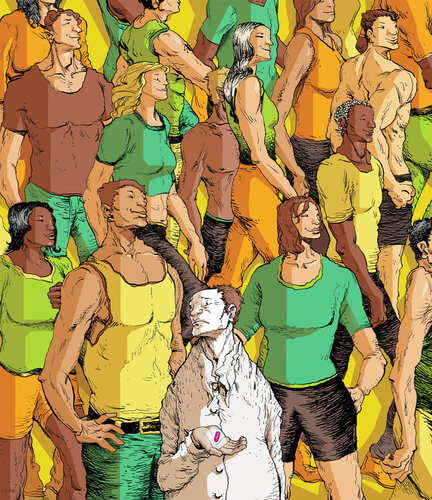The prospects of a fast-approaching Age of Enhancement evokes caution in almost everyone, scientist or otherwise. It has been the subject of countless dystopian sci-fi novels.
According to David Ewing Duncan, a journalist specializing in the implications of biotechnology, in a recent article in The New York Times, the future may be now—and maybe we should welcome it.
What is gene enhancement and how does it differ from gene therapy? The distinctions are fuzzy, but for the most part, gene therapy involves using genetic engineering to alter defective genes or insert corrected genes into the body in order to treat a disease. It is considered more a medical procedure. Enhancement focuses more on what might be called “nature tinkering,” although that too could involve medical measures such as developing vaccines that could strengthen one’s immune system to a point beyond that which would be achieved “naturally.”
The breadth of the subject and the potential for controversy is enormous, which is why Duncan’s piece provoked a torrent of debate. He argued that the technologies that we currently use to treat the sick or to enhance crops and livestock – including the full suite of genetics-based medicine and engineering – are destined to become “irresistible” tools for human augmentation.
“Synthetic biologists,” he wrote, “contend that re-engineering cells and DNA may one day allow us to eliminate diseases; a few believe we will be able to build tailor-made people.” Genetics, especially as applied to humans, is a sensitive topic, he acknowledged. “Tailor-made people” are both the ultimate in the direct genetic manipulation of mankind and a possibility that makes many people uncomfortable, across the ideological spectrum.
Duncan only touched briefly upon the moral concerns of an Age of Enhancement, which is usually focus of this debate, particularly on the ideological fringes. He is more pragmatic in his analysis. We are destined to embrace it, he wrote – the lure of being better, faster, stronger is too great; the only moral questions worth considering are those that assume an enhanced future.
BBC journalist Michelle Roberts solicited comments on the controversy from a range of bioethics experts who predictably focused on the social dangers of human enhancement. In a world with ever-increasing social divides, it seems entirely plausible that human enhancement (presumably expensive, at least at first), could create a divide between those who enhance themselves and those who, for reasons financial or philosophical, are unable to do so. Roberts contended that the scientific community, at least in the UK, is ready to take these concerns seriously. The Academy of Medical Sciences, the British Academy, the Royal Academy of Engineering and the Royal Society all urge caution although they all believe that various forms of it are inevitable.
Ideologues both left and right were not so measured in their responses, taking particular aim at Duncan’s contention that human enhancement is “irresistible.”
Charles Rubin, an associate professor of political science at Duquesne University and editor of the Futurisms blog at the liberal New Atlantis rebuked Ewing’s vision of an Age of Enhancement as “rather breathless and uncritical.” He acknowledged that it may be hard to resist the lure of manipulating the genome for personal or the greater good, but tried to draw a hard line between “hard to resist” and “irresistible,” saying not resisting—which he claims is a moral imperative—would be succumbing to laziness and self-indulgence. But Rubin offers no argument as to why, exactly, resistance is medically or morally the most appropriate choice.
Rubin’s protest, which is familiar in very liberal circles, finds an echo among conservatives in a post by Wesley Smith, a senior fellow at the creationist Discovery Institute’s Center on Human Exceptionalism and blogger at National Review. He characterizes Duncan as an uncritical spokesperson for “the Utopian transhumanist would-be human enhancers,” who he believes are mostly left-leaning narcissists. “I have noticed that these transhumanist types also are generally very liberal politically,” he sneered. “Well, how’s this for liberal? As NYT pundits dream dreams of becoming the Ubermenchen, people in Africa are going hungry…”
Yet Smith’s argument is really very similar to Rubin’s.
“[W]e are not flotsam and jetsam floating on currents that we can’t control,” he wrote. “We can say no to the seduction of eugenic human enhancement. We can, as rational human beings, say, ‘Let’s just not go there.’ And we should.”
“It’s decadence,” he concluded—ironically, a characterization with which both social critics would likely agree.
Related Articles:


